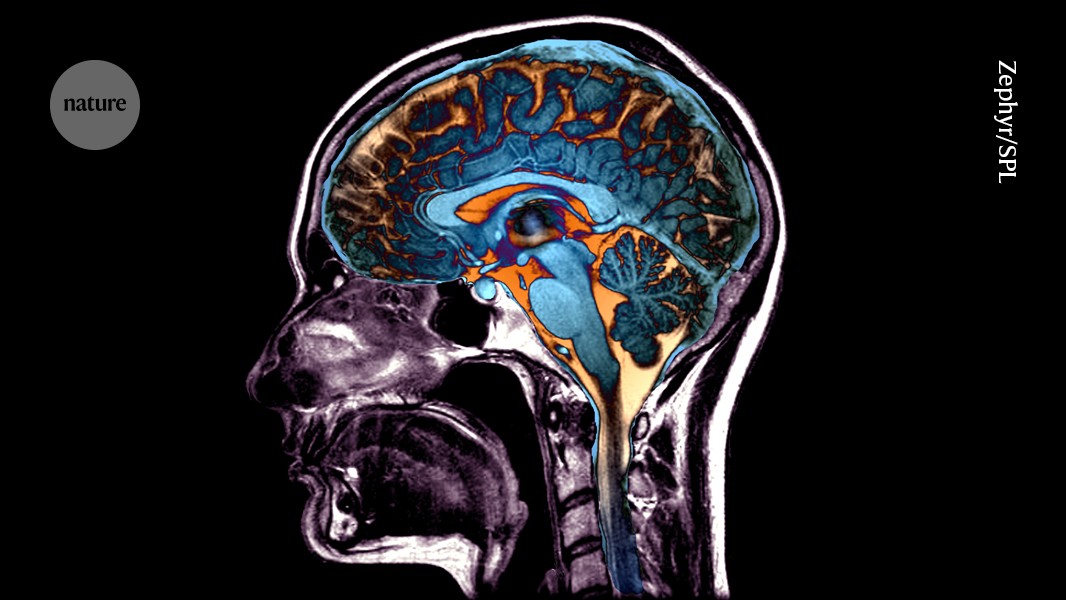Five ways the brain can age: 50,000 scans reveal possible patterns of damage

Results raise hopes that methods could be developed to detect the earliest stages of neurodegenerative disease

Some parts of the brain tend to atrophy and deform in concert with other regions.Credit: Zephyr/SPL
An analysis of almost 50,000 brain scans1 has revealed five distinct patterns of brain atrophy associated with ageing and neurodegenerative disease. The analysis has also linked the patterns to lifestyle factors such as smoking and alcohol consumption, as well as to genetic and blood-based markers associated with health status and disease risk.
The work is a “methodological tour de force” that could greatly advance researchers’ understanding of ageing, says Andrei Irimia, a gerontologist at the University of Southern California in Los Angeles, who was not involved in the work. “Prior to this study, we knew that brain anatomy changes with ageing and disease. But our ability to grasp this complex interaction was far more modest.”
The study was published on 15 August in Nature Medicine.
Wrinkles on the brain
Ageing can induce not only grey hair, but also changes in brain anatomy that are visible on magnetic resonance imaging (MRI) scans, with some areas shrivelling or undergoing structural alterations over time. But these transformations are subtle. “The human eye is not able to perceive patterns of systematic brain changes” associated with this decline, says Christos Davatzikos, a biomedical-imaging specialist at the University of Pennsylvania in Philadelphia and an author of the paper.
Previous studies have shown that machine-learning methods can extract the subtle fingerprints of ageing from MRI data. But these studies were often limited in scope and most included data from a relatively small number of people.
To identify broader patterns, Davatzikos’s team embarked on a study that took roughly eight years to complete and publish. They used a deep-learning method called Surreal-GAN that was developed by first author Zhijian Yang while he was a graduate student in Davatzikos’s laboratory. The scientists trained the algorithm on brain MRIs from 1,150 healthy people aged between 20 and 49, and 8,992 older adults, including many experiencing cognitive decline. This taught the algorithm to recognize recurring features of ageing brains, allowing it to create an internal model of anatomical structures that tend to change at the same time versus those that tend to change independently.
The researchers then applied the resulting model to MRI scans from almost 50,000 people participating in various studies of ageing and neurological health. This analysis yielded five discrete patterns of brain atrophy. The scientists linked various types of age-related brain degeneration to combinations of the five patterns, although there was some variability between individuals with the same condition.
Patterns of ageing
For example, dementia and its precursor, mild cognitive impairment, had links to three of the five patterns. Intriguingly, the researchers also found evidence that the patterns they identified could potentially be used to reveal the likelihood of more brain degeneration in the future. “If you want to predict progression from cognitively normal status to mild cognitive impairment, one [pattern] was the most predictive by far,” says Davatzikos. “At later stages, the addition of a second [pattern] enriches your prediction, which makes sense because this kind of captures the propagation of the pathology.” Other patterns were linked to conditions including Parkinson’s disease and Alzheimer’s disease, and one combination of three patterns was highly predictive of mortality.
The authors found clear associations between certain patterns of brain atrophy and various physiological and environmental factors, including alcohol intake and smoking, as well as various health-associated genetic and biochemical signatures. Davatzikos says that these results probably reflect the effect of overall physical well-being on neurological health, because damage to other organ systems can have consequences for the brain.
Davatzikos cautions that the study “doesn’t mean that everything can be boiled down to five numbers”, however, and his team is looking to work with data sets that include a broader range of neurological conditions and have greater racial and ethnic diversity.
doi: https://doi.org/10.1038/d41586-024-02692-z
This story originally appeared on: Nature - Author:Michael Eisenstein


















